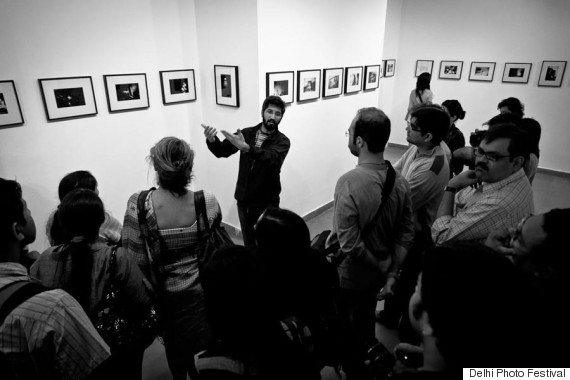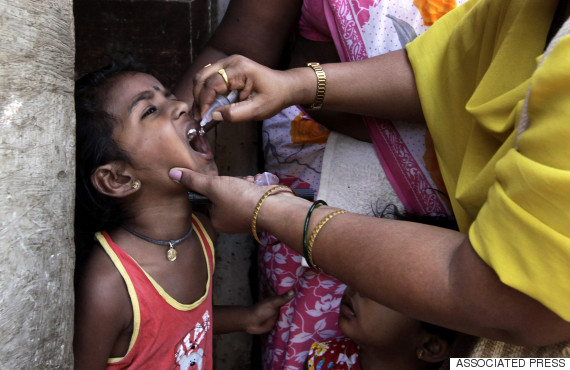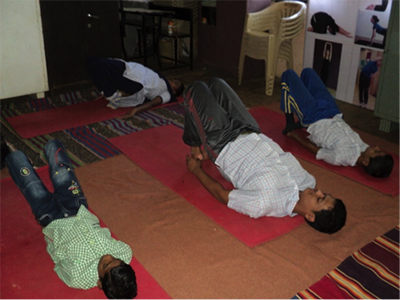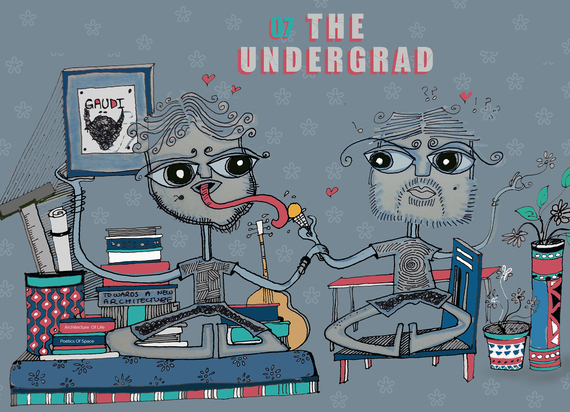It has been seven long years since the great Indian marketing disaster, popularly known as the Tata Nano happened. I am sure that this failure is still being dissected as a case study in many Indian B-schools. The car's dismal performance proved that marketers should never undermine the role of human psychology while crafting their strategies.
Since then, the Nano has been relaunched and repositioned many times. And, it still failed to woo customers. This year marked the most recent re-launch of the little car in a new avatar -- the GenX. With various sleek features coupled with vibrant ads and promotional campaigns positioning it as a "youth-centric" smart city car, it induced many "pundits" to speculate that the Tata management had finally learnt their lesson for good.
And then, the Renault Kwid happened to the Indian market, and to the Nano and Maruti "cash cow" Alto in particular. According to recent reviews, the Kwid has singlehandedly changed the game for the cars in the (approx) Rs 1.5-4 lakh bracket. It was an event that was waiting to happen.
"[T]he management is either misinformed or too stubborn to accept that their positioning and targeting strategies have been wrong since the very beginning."
But for now, let's concentrate on the Nano. The fundamental problem with this mini-car is that even after these seven years and many relaunches, the management is either misinformed or too stubborn to accept and understand that their positioning and targeting strategies have been wrong since the very beginning. They need to understand that the tag of being an "auto" or a "cheap and an unsafe" brand cannot be shed simply by upgrading or modifying the product like they have done with the GenX.
"I believe that the Nano should be launched as a women-exclusive brand."
If possible, they should start by doing away with the "Nano" brand name itself and give the cars a new label. More importantly, I believe that the Nano should be launched as a women-exclusive brand.
Our societal norms do not allow the ego of a man to drive around in a cute Nano when he can get a super-bike for the same price. I can claim with certainty that a very major chunk of the young male population (there are always exceptions, of course) wouldn't ever want a Nano. It may make a lot more sense to go for a novel (albeit risky) gender-based segmentation. With this single move, the Nano can stop being cheap and actually target a more premium segment -- because women would be willing to pay for the safety and exclusive style quotient that only a Nano would provide them.
That's the trick. It really has to become the symbol of "woman power", much like what the Scooty brands accomplished. For this to happen, it must be launched as a full-fledged feminine brand to get as much volume as possible and a blue ocean of opportunities coupled with the first mover advantage.
With appropriate marketing and promotional campaigns, this move could actually turn the tables for Nano. Just imagine the splash that this unexpected and fresh move would cause in the automotive market. Finally, Nano would dictate terms, I mean for once in its miserable life.
I accept that the Tatas would have to bring some modifications to the product. Add-ons that come to mind for attracting women include automatic transmission, a few additional safety features like tubeless tires along with peppy colors and plush interiors. But, it can be done considering they don't need to keep the product in the affordable range now and can stretch it a bit.
The positioning statement could be something like:
Of course, all of this will have to be backed by a solid campaign using media outlets such as TV, newspapers, premium magazines and social media. The target audience should be made aware of how the product provides style as well as a safety to the urban woman.
The promotional strategy could begin with regular ads featuring celebrities from Bollywood or the fashion world and ads in premium fashion and women's magazines. Furthermore, Nano can sponsor fashion events and free driving schools for women. Let women design the interiors of their car online and let them customise. Let them try out the car for free.
"Although it has failed to be the 'people's car', the Nano may well reinvent itself as the 'smart woman's car'."
The focus should be on creating a new personality for the brand and connecting emotionally as well as aesthetically with the target population. It wouldn't be too hard to sell the idea of smart fashion along with the idea of women freedom in a country such as India. Just take some cues from what the Scooty brands did when they first launched in India and how they leveraged the emotional quotient of the female population. We still don't have a car to fit this bill.
In summary, I believe that the key to success for the Nano against the likes of Renault Kwid is to create a brand new positioning plan and a separate gender-based segmentation to build a competitive advantage. Other than this, I really don't see how the Nano can revive its fortunes amidst all the competition.
With the advent of the Kwid, this segment of automobiles will soon see a slugfest and I really want the Nano to compete well. Although it has failed to be the "people's car", the Nano may well reinvent itself as the "smart woman's car".
![]() Like Us On Facebook |
Like Us On Facebook |
![]() Follow Us On Twitter |
Follow Us On Twitter |
![]() Contact HuffPost India
Contact HuffPost India
Since then, the Nano has been relaunched and repositioned many times. And, it still failed to woo customers. This year marked the most recent re-launch of the little car in a new avatar -- the GenX. With various sleek features coupled with vibrant ads and promotional campaigns positioning it as a "youth-centric" smart city car, it induced many "pundits" to speculate that the Tata management had finally learnt their lesson for good.
And then, the Renault Kwid happened to the Indian market, and to the Nano and Maruti "cash cow" Alto in particular. According to recent reviews, the Kwid has singlehandedly changed the game for the cars in the (approx) Rs 1.5-4 lakh bracket. It was an event that was waiting to happen.
"[T]he management is either misinformed or too stubborn to accept that their positioning and targeting strategies have been wrong since the very beginning."
But for now, let's concentrate on the Nano. The fundamental problem with this mini-car is that even after these seven years and many relaunches, the management is either misinformed or too stubborn to accept and understand that their positioning and targeting strategies have been wrong since the very beginning. They need to understand that the tag of being an "auto" or a "cheap and an unsafe" brand cannot be shed simply by upgrading or modifying the product like they have done with the GenX.
"I believe that the Nano should be launched as a women-exclusive brand."
If possible, they should start by doing away with the "Nano" brand name itself and give the cars a new label. More importantly, I believe that the Nano should be launched as a women-exclusive brand.
Our societal norms do not allow the ego of a man to drive around in a cute Nano when he can get a super-bike for the same price. I can claim with certainty that a very major chunk of the young male population (there are always exceptions, of course) wouldn't ever want a Nano. It may make a lot more sense to go for a novel (albeit risky) gender-based segmentation. With this single move, the Nano can stop being cheap and actually target a more premium segment -- because women would be willing to pay for the safety and exclusive style quotient that only a Nano would provide them.
That's the trick. It really has to become the symbol of "woman power", much like what the Scooty brands accomplished. For this to happen, it must be launched as a full-fledged feminine brand to get as much volume as possible and a blue ocean of opportunities coupled with the first mover advantage.
With appropriate marketing and promotional campaigns, this move could actually turn the tables for Nano. Just imagine the splash that this unexpected and fresh move would cause in the automotive market. Finally, Nano would dictate terms, I mean for once in its miserable life.
I accept that the Tatas would have to bring some modifications to the product. Add-ons that come to mind for attracting women include automatic transmission, a few additional safety features like tubeless tires along with peppy colors and plush interiors. But, it can be done considering they don't need to keep the product in the affordable range now and can stretch it a bit.
The positioning statement could be something like:
For...
...independent, smart, conscious and fashionable young Indian women between the ages of 18-30 years, who lead a busy life, have a decent income and live in the city.
The Nano...
....is a fashionable and smart city ride with the perfect balance of style and performance that is customised for women and their safety...
Which provides...
...women with "smart fashion". It is the best drive experience customised for urban women. It provides safety and convenience in the city roads every day, in every type of weather.
Of course, all of this will have to be backed by a solid campaign using media outlets such as TV, newspapers, premium magazines and social media. The target audience should be made aware of how the product provides style as well as a safety to the urban woman.
The promotional strategy could begin with regular ads featuring celebrities from Bollywood or the fashion world and ads in premium fashion and women's magazines. Furthermore, Nano can sponsor fashion events and free driving schools for women. Let women design the interiors of their car online and let them customise. Let them try out the car for free.
"Although it has failed to be the 'people's car', the Nano may well reinvent itself as the 'smart woman's car'."
The focus should be on creating a new personality for the brand and connecting emotionally as well as aesthetically with the target population. It wouldn't be too hard to sell the idea of smart fashion along with the idea of women freedom in a country such as India. Just take some cues from what the Scooty brands did when they first launched in India and how they leveraged the emotional quotient of the female population. We still don't have a car to fit this bill.
In summary, I believe that the key to success for the Nano against the likes of Renault Kwid is to create a brand new positioning plan and a separate gender-based segmentation to build a competitive advantage. Other than this, I really don't see how the Nano can revive its fortunes amidst all the competition.
With the advent of the Kwid, this segment of automobiles will soon see a slugfest and I really want the Nano to compete well. Although it has failed to be the "people's car", the Nano may well reinvent itself as the "smart woman's car".
 Like Us On Facebook |
Like Us On Facebook |  Follow Us On Twitter |
Follow Us On Twitter | 







